Introduction
Sabah is probably one of my favourite birding destinations, having been here six times already, each time except my first here was without any guiding, yet every single time I find something new, it just shows how much there is still to explore on this fairly well travelled part of Borneo.
Having been with Liew to West Malaysia back in 2018, I know how a good bird guide can increase your chances of seeing certain endemics, his local knowledge to this day still amazes me, and it was a trip I remembered vividly. Liew is a busy man nowadays, with numerous bird tours to lead throughout much of the year. Therefore, when he said he got a slot in September to guide us around Sabah, I immediately jumped on this precious opportunity!
Hoiling and I, together with Captain and Ki, made up this crew for our 10 days expedition around various locations in Sabah, covering both lowland and montane habitats, hopefully to see a few more species of endemics along the way. We flew out of Hong Kong on an evening flight to Kota Kinabalu, where we landed at 11pm, it was past 12pm by the time we got to the hotel Liew booked for us.
Day 1 - Klias Peat Swamp Forest
Even though I had a rough night sleeping, I still woke up at 5:20am and met Liew down at the lobby, he arranged a day of birding to Klias and around Kota Kinabalu for us, as I told him I have yet to see the Hook-billed Bulbul, a species only found in Sumatra and Borneo. Klias is probably the easiest place on earth (relatively) to find this species.
The journey from Kota Kinabalu to Klias took an hour and a half with relatively little traffic in the early hours, we had Roti canai for breakfast before we arrived. It was 7am by the time we got to Klias Peat Swamp Field Centre, this is one of the last remaining reserve in Sabah of this lowland habitat, while the biodiversity is generally lower than dipterocarp forests, there are certain species that specializes in this habitat.
 |
| Klias Peat Swamp Field Centre Boardwalk |
We followed the boardwalk into the forest, where most birders come looking for Hook-billed Bulbul and Grey-breasted Babbler, although according to Liew the latter is now very seldomly seen here, their numbers either dropped even lower or disappeared from here all together. Our first bird here was a Thick-billed Green Pigeon high up in the tree, a distant Lesser Cuckooshrike also joined in.
 |
| Thick-billed Green Pigeon - male |
 |
| Lesser Cuckooshrike - female |
Birds were very few and far between, most birds here were shy and remained in the cover. A few Dollarbirds were seen above, while lower down a few Grey-hooded Babblers made it hard to photograph them in the undergrowth. Red-crowned Barbets only called a few times and before deciding to shut up altogether. The better birds of the morning includes two Chestnut-bellied Malkoha and a Scarlet-breasted Flowerpecker, both gave fleeting views and left me without a photo record.
 |
| Dollarbird |
 |
| Grey-hooded Babbler |
Several interesting Pitcher-plants kept us entertained, this habitat seems perfect for these carnivorous plants, which specialize in swampy areas with poor soil.
 |
| Nepenthes ampullaria |
 |
| Nepenthes gracilis |
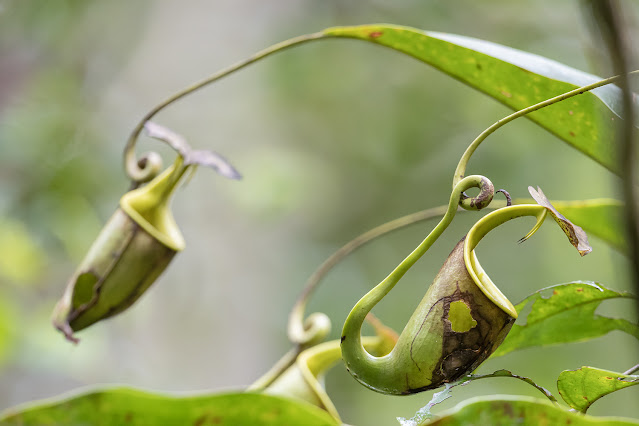 |
| Nepenthes bicalcarata |
Finally, our main target appeared after some perseverance, as a few Hook-billed Bulbuls finally came into view! This species certainly look very special amongst the bulbul family, with a long hooked bill that resembles somewhat of a Helmet-shrike from Africa. They gave great views before disappearing again into the forest. It was getting close to mid-day, with even less birds around we headed for lunch.
 |
| Hook-billed Bulbul - star bird at Klias |
After lunch, we headed back into Kota Kinabalu for a short session at Tanjung Aru Beach. Here, we targeted Blue-naped Parrot, a new bird for both Hoiling and Ki. Other common birds seen here includes the Long-tailed Parakeets feeding on the palm fruits.
 |
| Blue-naped Parrot |
 |
| Long-tailed Parakeet |
Asian Glossy Starlings were everywhere, as well as Green Imperial Pigeons and Pink-necked Green Pigeons.
 |
| Asian Glossy Starling |
 |
| Green Imperial Pigeon |
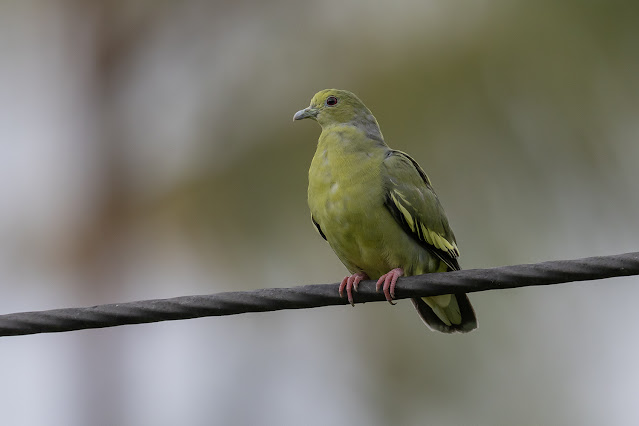 |
| Pink-necked Green Pigeon - female |
A White-breasted Woodswallow was feeding low down, giving wonderful views. Finally, a Sunda Pygmy Woodpecker came through, a species often found in more disturbed habitat.
 |
| White-breasted Woodswallow |
 |
| Sunda Pygmy Woodpecker |
Day 2 - Gunung Alab & Mt Trusmadi
We woke up extra early the next day, as we needed to get to Gunung Alab Substation to look for Crimson-headed and Red-breasted Partridge. We were up by 4:30 and headed out of Kota Kinabalu, from there we drove up towards Crocker Range. Along the way, Liew stopped by a nesting site for White-fronted Falconet, a Sabah endemic that I’ve missed on all my previous visit! We were not disappointed, what a treat it was to get incredible views of these cute little raptors!
 |
| White-fronted Falconet |
With our first target of the day done, we stopped by Gunung Alab Restaurant afterwards for breakfast, where we had some wonderful fried noodles and banana cakes, while enjoying views of the Bornean Swiftlets nesting on the building.
 |
| Bornean Swiftlet |
The journey to the birding spot was fairly straight forward, soon we were sitting behind the blind, waiting for the partridges to arrive. Our first bird there being a lovely male Snowy-browed Flycatcher.
 |
| Snowy-browed Flycacher - male |
It didn’t take too long before a group of Red-breasted Partridge came into the feeding station, I've previously seen this species on Mt Kinabalu, but views were nowhere as good as this!
 |
| Red-breasted Partridge |
As soon as they scattered, Sunda and Chestnut-hooded Laughingthrush replaced them. It took a while longer before a single male Crimson-headed Partridge came in. This is a very attractive species, where males have bright red head and breast along with a smart looking yellow bill. Liew said the two species of partridge almost never appear together, they always come in separately.
 |
| Sunda Laughingthrush |
 |
| Chestnut-hooded Laughingthrush |
 |
| Crimson-headed Partridge |
With all our targets at Gunung Alab seen, we started our long drive towards Jungle Girl Camp on Mt Trusmadi. The road going up is rough, and 4x4 is required to get up there, even then the muddy and bumpy track proves to be tricky for the Land Cruisers. It was 1pm by the time we arrived at the camp, we were greeted by a beautiful male Temminck's Sunbird feeding on the flowers in the garden.
 |
| Trus Madi Entomology Camp - Also known as Jungle Girl Camp |
 |
| Temminck's Sunbird - male |
After lunch (and some durians!), we headed out to the first bird hide. Our main target here is the legendary Bulwer’s Pheasant, which according to Liew should be quite easy, as he never missed this bird here on all his previous tours before. As we arrived I spotted a large bird perched above the road, which turns out to be a very handsome Blyth’s Hawk Eagle.
 |
| Blyth's Hawk Eagle |
Then began the waiting game. Unlike places further north like Thailand or Vietnam, feeding stations here seems to attract less birds in general, my theory is that there are simply more food available everywhere in this region that birds don’t need to come to the feeding stations as regularly for the easy food. The only two species that visited the feeding station were a pair of White-crowned Shamas and a single male Dayak Blue Flycatcher; a recent split from Hill Blue Flycatcher. Bornean Ground Squirrels were also a common sight here.
 |
| White-crowned Shama |
 |
| Dayak Blue Flycatcher - male |
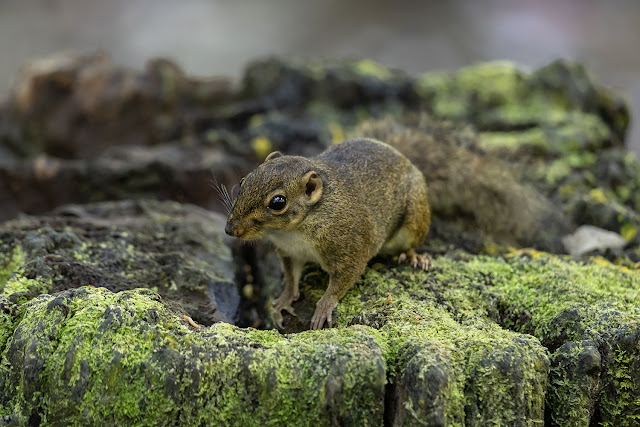 |
| Bornean Ground Squirrel |
We waited and waited, but no pheasant came. It wasn’t until 4:30pm, that somthing came into the station, what other than an adult male Great Argus! While Liew stated this hide is sometimes visited by the Great Argus, he himself have not actually seen them here. I had to change to my RF100-500mm lens in order to fit the whole bird in frame. While I've heard the Great Argus numerous times before, seeing this huge pheasant was a first for me!
 |
| Great Argus |
After this exciting appearance, nothing happened. Now I was starting to worry about dipping the Bulwer’s! Liew was still fairly confident and said if they don't come out in the afternoon, chances are they will come in the next morning. When we arrived back at the camp, Liew found us a few Pygmy White-eyes! Another species I've wanted to see for a long time! A Malaysian Pied Fantail was also present, hawking for insects before as the sun sets.
 |
| Pygmy White-eye |
 |
| Malaysian Pied Fantail |
At night, Jungle Girl Camp is transformed into a moth-er’s paradise! As they have several moth traps setup around the proximity of the building to attract moths and other insects, this camp is in fact a famous destination for entomologists around the world! Hoiling and I were treated to hundreds upon hundreds of moths.
 |
| Spaniocentra spicata |
 |
| Asota javana |
 |
| Sinna floralis |
 |
| Tisis sp. |
 |
| Pitama hermesalis |
 |
| Ennominae sp. |
 |
| Kunugia drakei |
 |
| Dichocrocis zebralis |
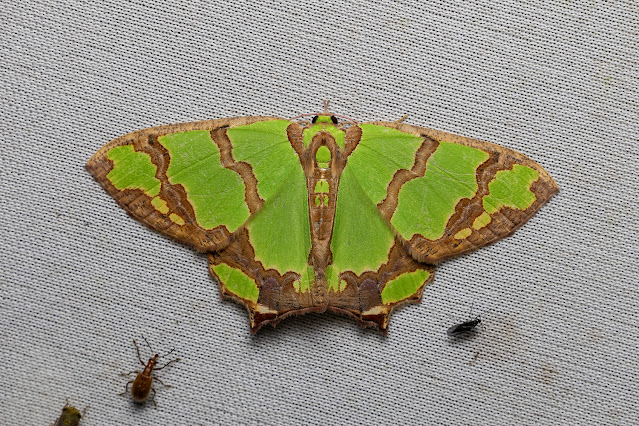 |
| Agathia sp. |
 |
| Checupa curvivena |
 |
| Teliphasa |
 |
| Ophthalmitis cordularioides |
 |
| Tonica sp. |
 |
| Astygisa circularia |
 |
| Chrysocraspeda dracontias |
 |
| Arthroschista hilaralis |
There were also a good selection of interesting insects, including Mantises, Katydids, Beetles and Stick Insects, all of which I have never seen before.
Deroplatys lobata
 |
| Rhombodera sp. |
 |
| Majangella ophirensis |
 |
| Dysmorpha obesa |
 |
| Zulpha perlaria |
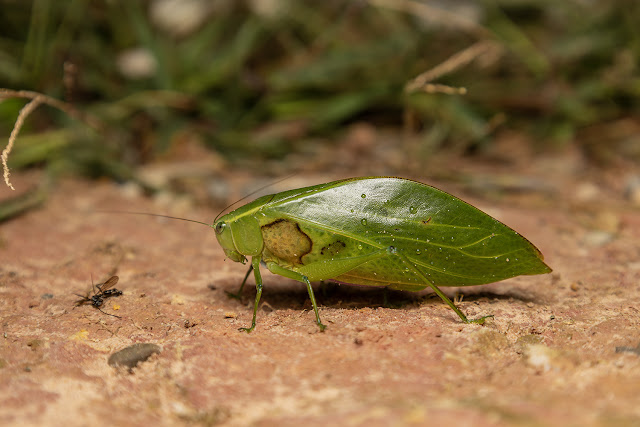 |
| Phaneropterinae sp. |
 |
| Cyclommatus lunifer |
 |
| Aegus sp. |
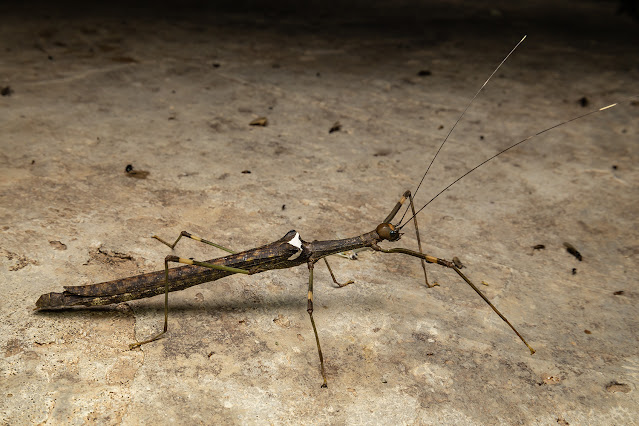 |
| Marmessoidea sp. |
 |
| Phyllium sp. |
The moth traps also attracted a Barred Eagle Owl to come and feed on the insects. This had been a species I’ve wanted to see for a long time, no doubt amongst one of the best looking owl in the world! Liew later found another individual, their size difference when seen side by side definitely indicate them as a pair.
 |
| Barred Eagle Owl - female |
 |
| Barred Eagle Owl - male |
 |
| Barred Eagle Owl - pair by the moth trap |
Near the building, a Malayan Civet came to pick up some fruits they left out in the garden, this species while common, have beautiful markings. The mothing went on through the night, as we still needed to wake up early the next day, we decided to head to bed just before mid-night.
 |
| Malayan Civet |










































































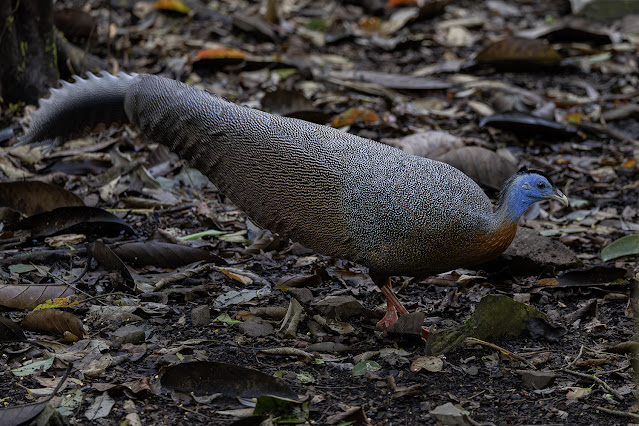








No comments:
Post a Comment